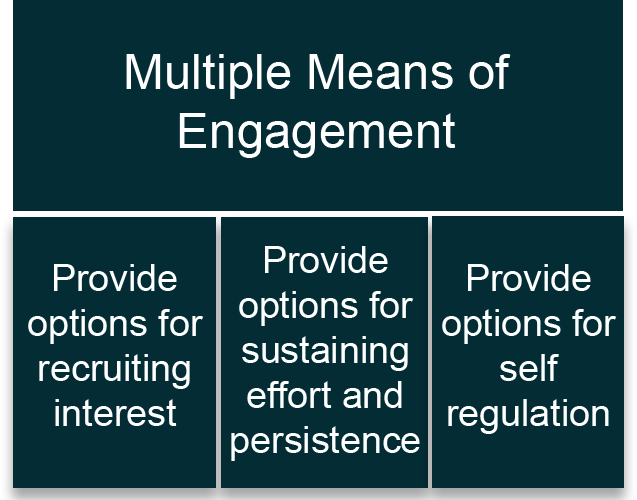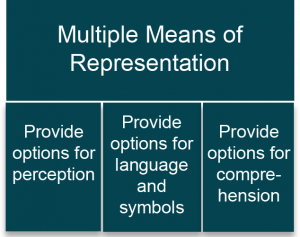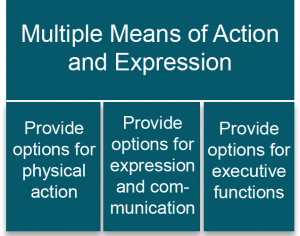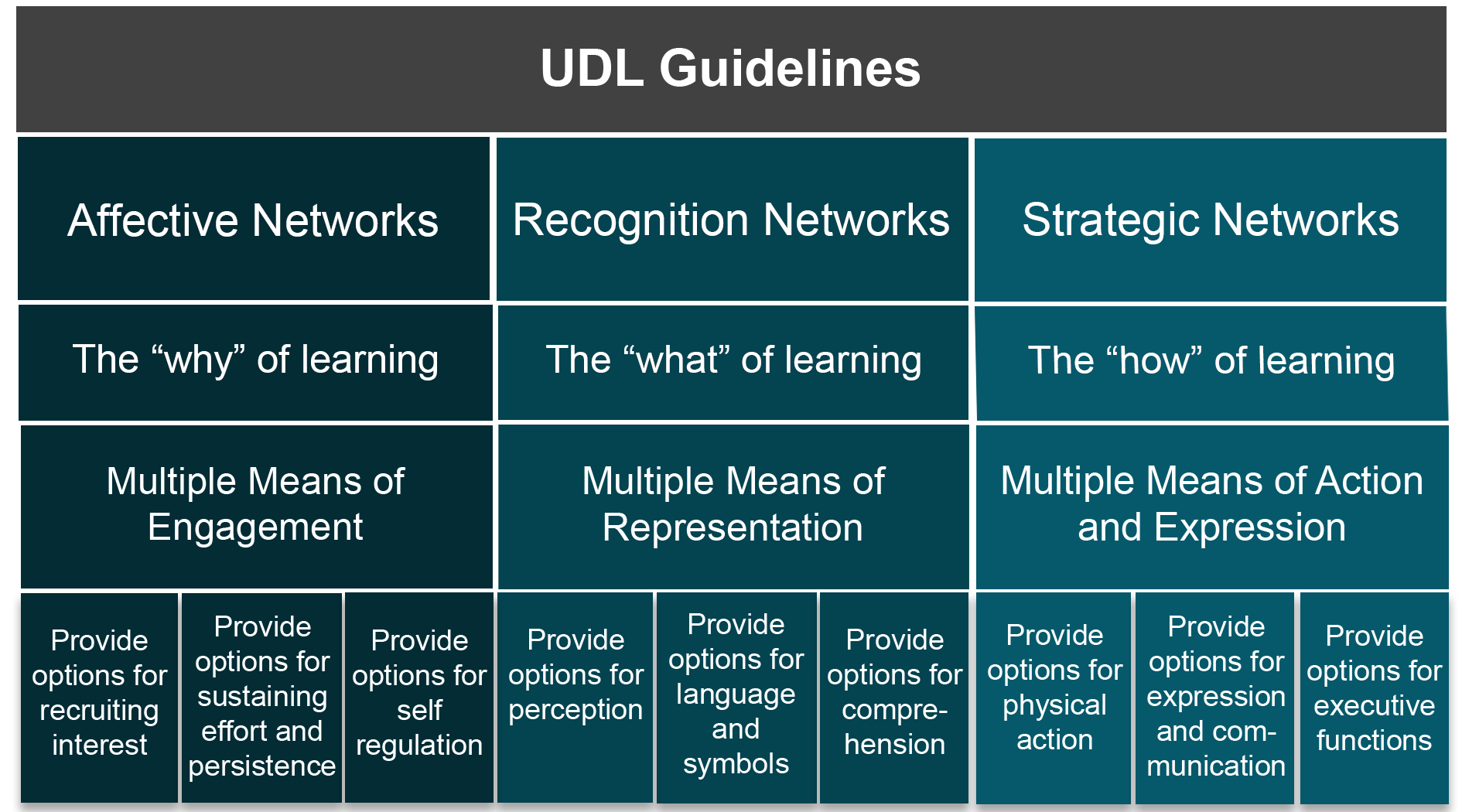1.2: UDL Guidelines
Universal Design for Learning (UDL) is a curriculum design, development, and delivery framework used to create equitable, inclusive, and accessible learning environments. UDL assumes all learning environments are diverse and that all learners have variable learning needs. UDL works to provide learning spaces (both physical and virtual) where all students can effectively learn, and demonstrate their learning while creating expert learners who are purposeful, motivated, resourceful, knowledgeable, strategic, and goal-directed.
Networks
UDL guidelines are based on the three primary brain networks shown in the slides below:
- Affective networks – The “why” of learning
- Recognition networks – The “what” of learning
- Strategic networks – The “how” of learning
(CAST, 2018)
Creating learning experiences that activate these three broad learning networks is a useful pursuit for educators as it works towards the goal of expert learning. In addition, the UDL framework reminds us that all brains are variable and that monolithic “learning styles” do not actually exist. Instead, we know that each brain is processing information in complex and variable interactions between the various networks of the brain.
Principles
CAST has identified a series of principles to guide design, development, and delivery in practice to address each of the different networks:
- Multiple means of engagement
- Multiple means of representation
- Multiple means of action and expression
Checkpoints
Each network contains checkpoints (three for each network making nine in total) that emphasize learner diversity that could either present barriers to, or opportunities for, learning. The checkpoints for each network are as follows:

- Multiple Means of Engagement
- Options for recruiting interest
- Options for sustaining effort and persistence
- Options for self-regulation

- Multiple Means of Representation
- Options for perception
- Options for language, math and symbols
- Options for comprehension

- Multiple Means of Action and Expression
- Options for physical action
- Options for expression and communication
- Options for executive functions
The guidelines are not prescriptive, but instead offer informed suggestions that can be used in any program, course or learning environment to support masterful learning and accurate assessment. Some post-secondary institutions use a streamlined version of the UDL framework to provide more flexibility for application (as shown below).


The video, What is UDL? [2:45] by Mohawk College (2019), explains how all of the UDL components work together.
Transcript of What is UDL? (PDF)![]()
The UDL Guidelines (CAST)
Some UDL implementers prefer to use a PDF version of the UDL Guidelines![]() from CAST that offer additional elements for each checkpoint. To learn more about the UDL Guidelines from CAST, consider reviewing the interactive version and accompanying resources on The UDL Guidelines
from CAST that offer additional elements for each checkpoint. To learn more about the UDL Guidelines from CAST, consider reviewing the interactive version and accompanying resources on The UDL Guidelines![]() website. The UDL Guidelines are consistently informed by user feedback and ongoing research, meaning the guidelines used in UDL for IDEA have been revised a number of times.
website. The UDL Guidelines are consistently informed by user feedback and ongoing research, meaning the guidelines used in UDL for IDEA have been revised a number of times.
Activity 2: Reflect
- At this point, are there specific topics related to UDL that you would like to learn more about?
- Is it possible to design a learning environment that works for all learners?
- What is one thing you realize you have done in your past teaching that would not fit the UDL Guidelines?
You are invited to reflect in the way that works best for you, which may include writing, drawing, creating an audio or video file, mind map or any other method that will allow you to reflect and refer back to your thoughts.
Alternatively, a text-based note-taking space is provided below. Any notes you take here remain entirely confidential and visible only to you. Use this space as you wish to keep track of your thoughts, learning, and activity responses. Download a text copy of your notes before moving on to the next page of the module to ensure you don’t lose any of your work!
References
CAST (2018). UDL & the Learning Brain [Graphic]. https://www.cast.org/products-services/resources/2018/udl-learning-brain-neuroscience
CAST (2018). Universal Design for Learning Guidelines version 2.2 [Chart]. http://udlguidelines.cast.org
Mohawk College. (2019). Universal Design for Learning [Graphic]. http://www.mohawkcollege.ca/employees/centre-for-teaching-learning/universal-design-for-learning
Mohawk College. (2019). UDL with CTL [Video]. https://www.mohawkcollege.ca/employees/centre-for-teaching-learning/universal-design-for-learning

